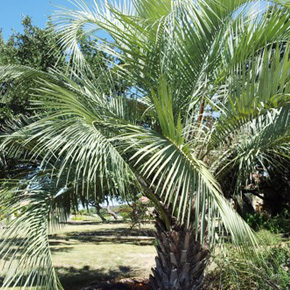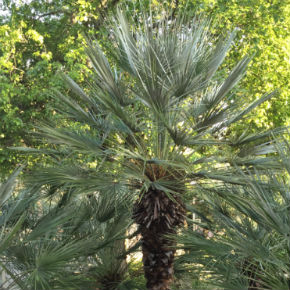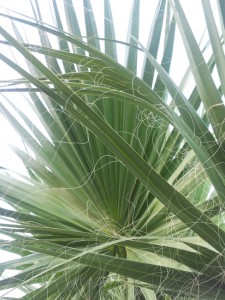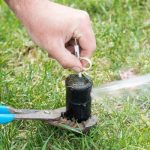Now is a good time to consider adding a palm or two to your landscape. A palm, properly planted and established, requires no supplemental water — and very little maintenance.
When it comes to the landscape, there are only two planting seasons in South Central Texas: Nov. 1 to April 1 for trees, shrubs and perennials and April 30 to Oct. 31 for grass, succulents, cycads and palms.
We are now in prime palm planting months and everyone should consider adding a palm or two to their landscape. A palm properly planted and established doesn’t require any supplemental water. In fact, the most prevalent way to kill a palm is by watering it.
The three words to remember in growing healthy, happy palms are drainage, drainage, drainage. Likewise, palms require very little maintenance. With the exception of aesthetic pruning once every three years, nothing is required for palms. Talk about a “couch potato” plant.
Here’s a refresher on which palms work best for our area. To keep it simple, I’m listing only three. For a complete list, read this article.
In alphabetical order by scientific binomial:
Pindo palm (Butia capitata)

The pindo or jelly palm is a feather palm. The fronds range in color from green to bluish green and characteristically display an extreme arc that provides a gracefulness in its foliage.
Mediterranean fan palm (Chamaerops humilis)

The Mediterranean or European fan palm is unique in that it can grow “branches” from its base, making it ideal for hedges or large planters.
California/Mexican fan palm (Washingtonia filifera and robusta)

The “kings” of South Texas palms. Approximately 80 percent of all palms in San Antonio are either W. filifera or W. robusta or a hybrid of the two. California fan palm is the “heftier” of the two, but Mexican fan palm grows faster.
Planting and Establishment Techniques
Depth and width of the planting hole: In contrast to woody plants, width is not a critical issue for palms since they don’t develop large woody root systems. Small shallow holes are equal to large ones. However, always try to transplant to the same depth as the original root depth.
Root ball: Similarly, the size of the root ball is not critical and may be as small as 6 to 8 inches of soil around the stem. All palm roots are fibrous and develop from the stem, a carrot looking main root.
Wrapping of fronds: Research at the University of Florida demonstrates a clear lack of benefit in tying the fronds together. An exception is the removal of all the fronds of the Sabal species. I suggest tying the fronds of all palms during transport; removing the rope after planting, then deciding on which fronds to remove after staking the palm upright.
Staking: All stakes are removed after 12 months. It does not hurt a palm to have the stakes nailed to the trunk, but for ultimate health and aesthetic purposes, a metal band around the trunk is frequently employed. Use a minimum of three, preferably four, stakes.
Water: Consistency is the key. Do not overwater one week to make up for lack of watering the previous week. One half gallon water for one-inch trunk or root ball diameter, twice a week for three months in the absence of rain, and once a week for the next three months is ideal. After establishment, limit supplemental water to two to four times a year at most, or if at all.
Fertilization: Never at planting, but one year later use a slow release product that contains the micronutrients manganese, iron and magnesium at a rate of one pound of fertilizer per 100 square feet of root area.
Prune: Once every three years and only dead fronds and those live fronds below “3 o’clock and 9 o’clock” horizontally. December and January are the best times for pruning.
Palms provide drought tolerant and low maintenance additions to the landscape. Consider adding some palms this summer or the next, and then sit back and relax as the palms basically take care of themselves.




